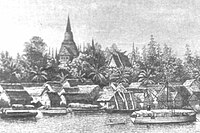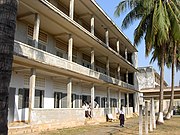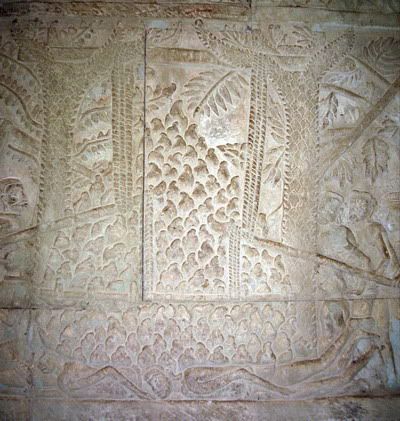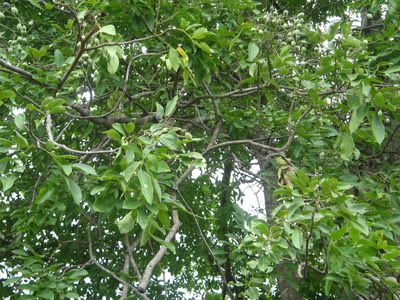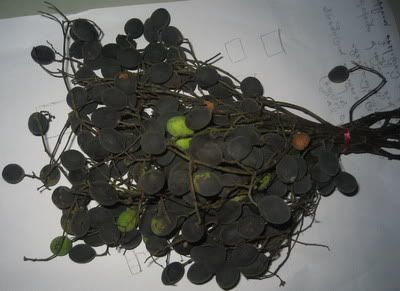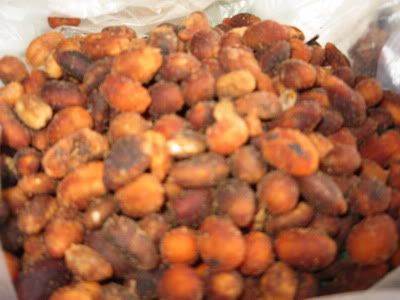บทที่ 1
องค์ประกอบของระบบคอมพิวเตอร์
คอมพิวเตอร์ทำงานอย่างเป็นระบบ (System) หมายถึงภายในระบบงานคอมพิวเตอร์ ประกอบด้วยองค์ประกอบย่อยที่มีหน้าที่เฉพาะ ทำงานประสานสัมพันธ์กัน เพื่อให้งานบรรลุตามเป้าหมาย ในระบบงานคอมพิวเตอร์
การที่มีเครื่องคอมพิวเตอร์เพียงอย่างเดียว จะยังไม่สามารถทำงานได้ด้วยตัวเอง ซึ่งหากจะให้คอมพิวเตอร์ทำงานได้อย่างเป็นระบบและมีประสิทธิภาพแล้ว ระบบคอมพิวเตอร์ควรจะประกอบไปด้วยองค์ประกอบคือ บุคลากร (Peopleware) ฮาร์ดแวร์ (Hardware) ซอฟต์แวร์ (Software) ข้อมูล(Data) สารสนเทศ(Information) และกระบวนการทำงาน ( Procedure )
1. ฮาร์ดแวร์ ( Hardware ) ฮาร์ดแวร์เป็นองค์ประกอบของตัวเครื่องที่สามารถจับต้องได้ ได้แก่ วงจรไฟฟ้า ตัวเครื่อง จอภาพ เครื่องพิมพ์ คีร์บอร์ด เป็นต้นซึ่งสามารถแบ่งส่วนพื้นฐานของฮาร์ดแวร์เป็น 4 หน่วยสำคัญ
1.1 หน่วยรับข้อมูลหรืออินพุต ( Input Unit) ทำหน้าที่รับข้อมูลและโปรแกรมเข้า เครื่อง มีโครงสร้างดังรูป 1.3 ได้แก่ คีย์บอรืดหรือแป้นพิมพ์ เมาส์ เครื่องสแกน เครื่องรูดบัตร Digitizer เป็นต้น
1.2 ระบบประมวลผลกลางหรือซีพียู (CPU : Central Processing Unit) ทำหน้าที่ในการทำงานตามคำสั่งที่ปรากฏอยู่ในโปรแกรม ปัจจุบันซีพียูของเครื่องพีซี รู้จักในนามไมโครโปรเซสเซอร์ ( Micro Processor) หรือ Chip เช่นบริษัท Intel คือ Pentium หรือ Celelon ส่วนของบริษัท AMD คือ K6,K7(Athlon) เป็นต้น ไมโครโปรเซสเซอร์ มีหน้าที่ในการประมวลผลข้อมูล ในลักษณะของการคำนวณและเปรียบเทียบ โดยจะทำงานตามจังหวะเวลาที่แน่นอน เรียกว่าสัญญาณ Clock เมื่อมีการเคาะจังหวะหนึ่งครั้ง ก็จะเกิดกิจกรรม 1 ครั้ง เราเรียกหน่วย ที่ใช้ในการวัดความเร็วของซีพียูว่า “เฮิร์ท”(Herzt) หมายถึงการทำงานได้กี่ครั้งในจำนวน 1 วินาที เช่น ซีพียู Pentium4 มีความเร็ว 2.5 GHz หมายถึงทำงานเร็ว 2,500 ล้านครั้ง ในหนึ่งวินาที กรณีที่สัญญาณ Clock เร็วก็จะทำให้คอมพิวเตอร์เครื่องนั้น มีความเร็วสูง และ ซีพียูที่ทำงานเร็วมาก ราคาก็จะแพงขึ้นมากตามไปด้วย
1.3 หน่วยเก็บข้อมูล ( Storage ) ซึ่งสามารถแยกตามหน้าที่ได้เป็น 2 ลักษณะ คือ
1.3.1 หน่วยเก็บข้อมูลหลักหรือความจำหลัก ( Primary Storage หรือ Main Memory ) ทำหน้าที่เก็บโปรแกรมหรือข้อมูลที่รับมาจากหน่วยรับข้อมูลเพื่อเตรียมส่งให้หน่วยประมวลผลกลางทำการประมวลผล และรับผลลัพธ์ที่ได้จากการประมวลผลเพื่อส่งออกหน่วยแสดงข้อมูลต่อไปซึ่งอาจแยกได้เป็น 2 ประเภท คือ RAM ( Random Access Memory ) ที่สามารถอ่านและเขียนข้อมูลได้ในขณะที่เปิดเครื่องอยู่ แต่เมื่อปิดเครื่องข้อมูลใน RAM จะหายไป และ ROM ( Read Only Memory ) จะอ่านได้อย่างเดียว เช่น BIOS (Basic Input Output system) โปรแกรมฝังไว้ใช้ตอนสตาร์ตเครื่อง เพื่อเครื่องคอมพิวเตอร์เริ่มต้นทำงาน เป็นต้น
1.3.2 หน่วยเก็บข้อมูลสำรอง ( Secondary Storage ) เป็นหน่วยที่ทำหน้าที่เก็บข้อมูล หรือโปรแกรมที่จะป้อนเข้าสู่หน่วยความจำหลักภายในเครื่องก่อนทำการประมวลผลโดยซีพียู รวมทั้งเป็นที่เก็บผลลัพธ์จากการประมวลผลด้วย ปัจจุบันรู้จักในนามฮาร์ดดิสก์ (Hard disk) หรือแผ่นฟร็อปปีดิสก์ (Floppy Disk) ซึ่งเมื่อปิดเครื่องข้อมูลจะยังคงเก็บอยู่
1.4 หน่วยแสดงข้อมูลหรือเอาต์พุต ( Output Unit ) ทำหน้าที่ในการแสดงผลลัพธ์ที่ได้จากการประมวลผล ได้แก่ จอภาพ และเครื่องพิมพ์ เป็นต้น ทั้ง 4 ส่วนจะเชื่อมต่อกันด้วยบัส ( Bus )
2 ซอฟต์แวร์ ( Software )
ซอฟต์แวร์ คือโปรแกรมหรือชุดคำสั่ง ที่สั่งให้ฮาร์ดแวร์ทำงาน รวมไปถึงการควบคุมการทำงาน ของอุปกรณ์แวดล้อมต่างๆ เช่น ฮาร์ดดิสก์ ดิสก์ไดร์ฟ ซีดีรอม การ์ดอินเตอร์เฟสต่าง ๆ เป็นต้น ซอฟต์แวร์ เป็นสิ่งที่มองไม่เห็นจับต้องไม่ได้ แต่รับรู้การทำงานของมันได้ ซึ่งต่างกับ ฮาร์ดแวร์ (Hardware) ที่สามารถจับต้องได้ ซึ่งแบ่งเป็น 2 ประเภทคือ
2.1 ซอฟต์แวร์ระบบ ( System Software ) คือโปรแกรม ที่ใช้ในการควบคุมระบบการ ทำงานของเครื่องคอมพิวเตอร์ทั้งหมด เช่น การบูตเครื่อง การสำเนาข้อมูล การจัดการระบบของดิสก์ ชุดคำสั่งที่เขียนเป็นคำสั่งสำเร็จรูป โดยผู้ผลิตเครื่องคอมพิวเตอร์ และมีมาพร้อมแล้วจากโรงงานผลิต การทำงานหรือการประมวลผล ของซอฟต์แวร์เหล่านี้ ขึ้นกับเครื่องคอมพิวเตอร์แต่ละเครื่อง ระบบของซอฟต์แวร์เหล่านี้ ออกแบบมาเพื่อการปฏิบัติควบคุม และมีความสามารถในการยืดหยุ่น การประมวลผลของเครื่องคอมพิวเตอร์ แบ่งออกเป็น 4 ประเภทคือ
2.1.1 โปรแกรมระบบปฏิบัติการ (Operating System) เป็นโปรแกรมที่ใช้ควบคุม และติดต่อกับอุปกรณ์ต่าง ๆ ของเครื่องคอมพิวเตอร์ โดยเฉพาะการจัดการระบบของดิสก์ การบริหารหน่วยความจำของระบบ กล่าวโดยสรุปคือ หากจะทำงานใดงานหนึ่ง โดยใช้คอมพิวเตอร์เป็นเครื่องมือ ในการทำงาน แล้วจะต้องติดต่อกับซอฟต์แวร์ระบบก่อน ถ้าขาดซอฟต์แวร์ชนิดนี้ จะทำให้เครื่องคอมพิวเตอร์ ไม่สามารถทำงานได้ ตัวอย่างของซอฟต์แวร์ประเภทนี้ได้แก่ โปรแกรมระบบปฏิบัติการ Unix Linux DOS และWindows (เวอร์ชั่นต่าง ๆ เช่น 95 98 me 2000 NT XP Vista ) เป็นต้น
2.1.2 ตัวแปลภาษา (Translator) จาก Source Code ให้เป็น Object Code (แปลจากภาษาที่มนุษย์เข้าใจ ให้เป็นภาษาที่เครื่องเข้าใจ เปรียบเสมือนล่ามแปลภาษา) เป็นซอฟต์แวร์ที่ใช้ในการแปลภาษาระดับสูง ซึ่ง เป็นภาษาใกล้เคียงภาษามนุษย์ ให้เป็นภาษาเครื่องก่อนที่จะนำไปประมวลผล ตัวแปลภาษาแบ่งออกเป็นสองประเภทคือ คอมไพเลอร์ (Compiler) และอินเตอร์พีทเตอร์ (Interpeter) คอมไพเลอร์จะแปลคำสั่งในโปรแกรมทั้งหมดก่อน แล้วทำการลิ้ง (Link) เพื่อให้ได้คำสั่งที่เครื่องคอมพิวเตอร์เข้าใจ ส่วนอินเตอร์พีทเตอร์จะแปลทีละประโยคคำสั่ง แล้วทำงานตามประโยคคำสั่งนั้น การจะเลือกใช้ตัวแปลภาษาแบบใดนั้น จะขึ้นอยู่กับภาษาที่ใช้ในการเขียนโปรแกรม ซึ่งมี 2 แบบได้แก่ ภาษาแบบโครงสร้าง เช่น ภาษาเบสิก (Basic) ภาษาปาสคาล (Pascal) ภาษาซี (C) ภาษาจาวา(Java)ภาษาโคบอล (Cobol) ภาษา SQL ภาษา HTML เป็นต้น ภาษาแบบเชิงวัตถุ ( Visual หรือ Object Oriented Programming ) เช่น Visual Basic,Visual C หรือ Delphi เป็นต้น
2.1.3 ยูติลิตี้ โปรแกรม (Utility Program) คือซอฟต์แวร์เสริมช่วยให้เครื่องทำงานมีประสิทธิภาพ มากขึ้น เช่น ช่วยในการตรวจสอบดิสก์ ช่วยในการจัดเก็บข้อมูลในดิสก์ ช่วยสำเนาข้อมูล ช่วยซ่อมอาการชำรุดของดิสก์ ช่วยค้นหาและกำจัดไวรัส ฯลฯ เป็นต้นโปรแกรมในกลุ่มนี้ได้แก่ โปรแกรม Norton Winzip Scan virus Sidekick Scandisk Screen Saver ฯลฯ เป็นต้น
2.1.4 ติดตั้งและปรับปรุงระบบ (Diagonostic Program) เป็นซอฟต์แวร์ที่ใช้ในการติดตั้งระบบ เพื่อให้คอมพิวเตอร์สามารถติดต่อและใช้งานอุปกรณ์ต่าง ๆ ที่นำมาติดตั้งระบบ ได้แก่ โปรแกรม Setupและ Driver ต่าง ๆ เช่น โปรแกรม Setup Microsoft Office โปรแกรม Driver Sound , Driver Printer , Driver Scanner ฯลฯ เป็นต้น
2.2 ซอฟต์แวร์ประยุกต์ (Application Software)
คือ ซอฟต์แวร์หรือโปรแกรมที่ทำให้คอมพิวเตอร์ทำงานต่างๆ ตามที่ผู้ใช้ต้องการ ไม่ว่าจะด้านเอกสาร บัญชี การจัดเก็บข้อมูล เป็นต้น ซอฟต์แวร์ประยุกต์สามารถจำแนกได้เป็น 2 ประเภท คือ
2.2.1 ซอฟต์แวร์สำหรับงานเฉพาะด้าน (Special Purpose Software) คือ โปรแกรมซึ่งเขียนขึ้นเพื่อการทำงานเฉพาะอย่างที่เราต้องการ บางที่เรียกว่า User’s Program เช่น โปรแกรมการทำบัญชีจ่ายเงินเดือน โปรแกรมระบบเช่าซื้อ โปรแกรมการทำสินค้าคงคลัง เป็นต้น ซึ่งแต่ละโปรแกรมก็มักจะมีเงื่อนไข หรือแบบฟอร์มแตกต่างกันออกไปตามความต้องการ หรือกฏเกณฑ์ของแต่ละหน่วยงานที่ใช้ ซึ่งสามารถดัดแปลงแก้ไขเพิ่มเติม (Modifications) ในบางส่วนของโปรแกรมได้ เพื่อให้ตรงกับความต้องการของผู้ใช้ และซอฟต์แวร์ประยุกต์ที่เขียนขึ้นนี้โดยส่วนใหญ่มักใช้ภาษาระดับสูงเป็นตัวพัฒนา
2.2.2 ซอฟต์แวร์สำหรับงานทั่วไป (General Purpose Software) เป็นโปรแกรมประยุกต์ที่มีผู้จัดทำไว้ เพื่อใช้ในการทำงานประเภทต่างๆ ทั่วไป โดยผู้ใช้คนอื่นๆ สามารถนำโปรแกรมนี้ไปประยุกต์ใช้กับข้อมูลของตนได้ แต่จะไม่สามารถทำการดัดแปลง หรือแก้ไขโปรแกรมได้ ผู้ใช้ไม่จำเป็นต้องเขียนโปรแกรมเอง ซึ่งเป็นการประหยัดเวลา แรงงาน และค่าใช้จ่ายในการเขียนโปรแกรม นอกจากนี้ ยังไม่ต้องเวลามากในการฝึกและปฏิบัติ ซึ่งโปรแกรมสำเร็จรูปนี้ มักจะมีการใช้งานในหน่วยงาน ซึ่งขาดบุคลากรที่มีความชำนาญเป็นพิเศษในการเขียนโปรแกรม ดังนั้น การใช้โปรแกรมสำเร็จรูปจึงเป็นสิ่งที่อำนวยความสะดวกและเป็นประโยชน์อย่างยิ่ง ตัวอย่างโปรแกรมสำเร็จรูปที่นิยมใช้ได้แก่ MS-Office, Lotus, Adobe Photoshop, SPSS, Internet Explorer และ เกมส์ต่างๆ เป็นต้น
3 บุคลากร ( Peopleware )
บุคลากรจะเป็นสิ่งสำคัญที่จะเป็นตัวกำหนดถึงประสิทธิภาพถึงความสำเร็จและความคุ้มค่าในการใช้งานคอมพิวเตอร์ ซึ่งสามารถแบ่งบุคลากรตามหน้าที่เกี่ยวข้องตามลักษณะงานได้ 6 ด้าน ดังนี้
3.1 นักวิเคราะห์และออกแบบระบบ (Systems Analyst and Designer : SA ) ทำหน้าที่ศึกษาและรวบรวมความต้องการของผู้ใช้ระบบ และทำหน้าที่เป็นสื่อกลางระหว่างผู้ใช้ระบบและนักเขียนโปรแกรม (Programmer) หรือปรับปรุงคุณภาพงานเดิม นักวิเคราะห์ระบบต้องมีความรู้เกี่ยวกับระบบคอมพิวเตอร์ พื้นฐานการเขียนโปรแกรม และควรจะเป็นผู้มีความคิดริเริ่มสร้างสรรค์มีมนุษย์สัมพันธ์ที่ดี
3.2 โปรแกรมเมอร์ ( Programmer ) คือบุคคลที่ทำหน้าที่เขียนซอฟต์แวร์ต่างๆ(Software )หรือเขียนโปรแกรมเพื่อสั่งงานให้เครื่องคอมพิวเตอร์ทำงานตามความต้องการของผู้ใช้ โดยเขียนตามแผนผังที่นักวิเคราะห์ระบบได้เขียนไว้
3.3 ผู้ใช้ ( User ) เป็นผู้ใช้ระบบคอมพิวเตอร์ ซึ่งจะเป็นผู้ปฏิบัติหรือกำหนดความต้องการในการใช้ระบบคอมพิวเตอร์ว่าทำงานอะไรได้บ้าง ผู้ใช้งานคอมพิวเตอร์ทั่วไป จะต้องเรียนรู้วิธีการใช้เครื่อง และวิธีการใช้งานโปรแกรม เพื่อให้โปรแกรมที่มีอยู่สามารถทำงานได้ตามที่ต้องการ
3.4 ผู้ปฏิบัติการ (Operator ) สำหรับระบบขนาดใหญ่ เช่น เมนเฟรม จะต้องมีเจ้าหน้าที่คอมพิวเตอร์ที่คอยปิดและเปิดเครื่อง และเฝ้าดูจอภาพเมื่อมีปัญหาซึ่งอาจเกิดขัดข้อง จะต้องแจ้ง System Programmer ซึ่งเป็นผู้ดูแลตรวจสอบแก้ไขโปรแกรมระบบควบคุมเครื่อง (System Software) อีกทีหนึ่ง
3.5 ผู้บริหารฐานข้อมูล ( Database Administrator : DBA ) กลุ่มบุคคลที่ทำหน้าที่ดูแลข้อมูลผ่านระบบจัดการฐานข้อมูล ซึ่งจะควบคุมให้การทำงานเป็นไปอย่างราบรื่น นอกจากนี้ยังทำหน้าที่กำหนดสิทธิการใช้งานข้อมูล กำหนดในเรื่องความปลอดภัยของการใช้งาน พร้อมทั้งดูแลดาต้าเบสเซิร์ฟเวอร์ (Database Server) ให้ทำงานอย่างปกติด้วย
3.6 ผู้จัดการระบบ (System Manager) คือ ผู้วางนโยบายการใช้คอมพิวเตอร์ให้เป็นไปตามเป้าหมายของหน่วยงาน เป็นผู้ที่มีความหมายต่อความสำเร็จหรือล้มเหลวของการนำระบบคอมพิวเตอร์เข้ามาใช้งานเป็นอย่างมาก
4. ข้อมูลและสารสนเทศ
4.1 ข้อมูล (Data) หมายถึง ข้อเท็จจริงหรือเหตุการณ์ที่เกิดขึ้น แล้วใช้ตัวเลขตัวอักษร หรือสัญลักษณ์ ต่างๆ ทำความหมายแทนสิ่งเหล่านั้น เช่น
· คะแนนสอบวิชาภาษาไทยของนักเรียน
· อายุของพนักงานในบริษัทชินวัตรจำกัด
· ราคาขายของหนังสือในร้านหนังสือดอกหญ้า
· คำตอบที่ผู้ถูกสำรวจตอบในแบบสอบถาม
4.2 สารสนเทศ (Information) หมายถึง ข้อสรุปต่างๆ ที่ได้จากการนำข้อมูลมาทำการวิเคราะห์ หรือผ่านวิธีการที่ ได้กำหนดขึ้น ทั้งนี้เพื่อนำข้อสรุปไปใช้งานหรืออ้างอิง เช่น
· เกรดเฉลี่ยของวิชาภาษาไทยของนักเรียน
· อายุเฉลี่ยของพนักงานในบริษัทชินวัตรจำกัด
· ราคาขายสูงสุดของหนังสือในร้านหนังสือดอกหญ้า
· ข้อสรุปจากการสำรวจคำตอบในแบบสอบถาม
5. กระบวนการทำงาน ( Procedure )
องค์ประกอบด้านนี้หมายถึงกระบวนการทำงานเพื่อให้ได้ผลลัพธ์ตามต้องการ ในการทำงานกับคอมพิวเตอร์ผู้ใช้จำเป็นต้องทราบขั้นตอนการทำงานเพื่อให้ได้งานที่ถูกต้องและมีประสิทธิภาพ ซึ่งอาจจะมีขั้นตอนสลับซับซ้อนหลายขั้นตอน ดังนั้นจึงมีความจำเป็นต้องมีคู่มือปฏิบัติงาน เช่น คู่มือผู้ใช้ ( user manual ) หรือคู่มือผู้ดูแลระบบ ( operation manual ) เป็นต้น
Full copied from : http://tps.comsci.info/programming/lesson1.htm
Next Lesson->


